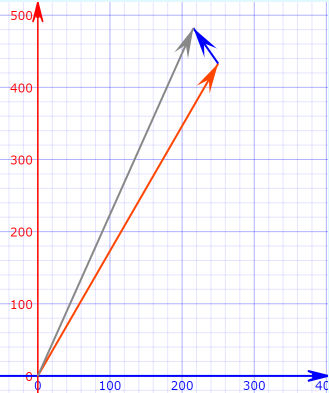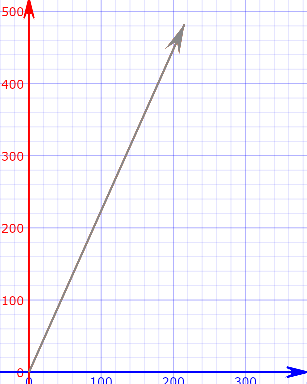I always like to sketch out an idea of what we're looking at

Let's resolve the vectors and find the #x# and #y# components
#* * * * * * * * * * * * * * * * * * * * * * *#
Vector #A#
#500# kph
#60# degrees
We can find the #y# component using #sin(theta)=(opp)/(hyp)#
Lucky for us, we have #hyp#, #500#, and #theta#, #60#
#sin(60)=(opp)/500#
#opp = sin(60)xx500#
#opp = 433# kph
So #color(blue)(A_y=433.0#
Let's find #A_x# using #cos(theta) = (adj)/(hyp)#
#adj = cos(60)xx500#
#adj = 250#
#color(green)(A_x = 250.0#
#* * * * * * * * * * * * * * * * * * * * * * *#
Vector #B#
Let's find #B_y#:
#sin(125) xx 60 = opp#
#opp = color(blue)(B_y = 49.15#
Now for #B_x#:
#adj = cos(125) xx 60#
#adj = color(green)(B_x = -34.4#
Uh-oh! A negative number, is that right? Well, let's look at our sketch. it looks like the blue vector is moving up and to the left, so in a positive #y# direction and a negative #x# direction. So yes, #-34.4# sounds right
#* * * * * * * * * * * * * * * * * * * * * * *#
Now let's combine these components
Add the #x#s:
#color(green)(A_x+B_x = 250.0 + -34.4 = 215.6# kph
Add the #y#s:
#color(blue)(A_y+B_y = 433.0 + 49.15 = 482.2# kph
Now we have the components for the resultant, and we need to find its magnitude and direction.

To find the speed of the airplane, we need to find the hypotenuse. We can use Pythagorean's theorem
#R = sqrt(color(green)((R_x)^2) + color(blue)((R_y)^2))#
#R = sqrt(color(green)(215.6)^2 + color(blue)(482.2)^2#
#R = sqrt(278957.096)#
#R = 528.16# kph
So we have the speed, but we need the direction. TO do that, we use our components again:
#tan(theta) = (color(blue)(opp))/(color(green)(adj))#
#tan(theta) = color(blue)(482.2)/color(green)(215.6)#
#theta = tan^-1(color(blue)(482.2)/color(green)(215.6))#
#theta = 65.9# degrees

